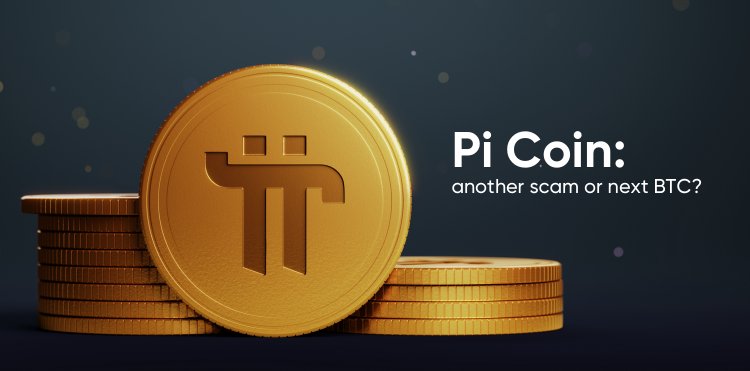
Pi Network (PI) is the newest digital coin to grab the attention of the cryptocurrency community, even before it has fully launched. Some users view it as a way to get involved in a cryptocurrency from the ground up and profit in the future, in the same way that early Bitcoin adopters have racked up massive gains from mining and holding the coin. However, others have likened Pi to a multi-level marketing (MLM) scam that holds no value.
But what is Pi Network and how does it work? Have you heard of the Pi cryptocurrency and are you looking to find out more about it as a potential investment?
This article provides an overview of what the Pi Network aims to achieve and how the Pi cryptocurrency price prediction is already taking shape.
What is Pi Network?
Pi Network is a digital currency project that aims to keep crypto mining accessible as the centralisation of the first generation of currencies like Bitcoin has put them out of reach of everyday users. The Pi Network, developed by a team of Stanford graduates, enables users to mine coins using its mobile phone app, validating transactions on a distributed record.
With branding based on the number π, Phase 1 of the project launched in 2019 on Pi Day, March 14, with its free Pi mining app. By June 2019, the network had more than 100,000 active users, and a year later when Phase 2 launched there were more than 3.5 million. The app started running ads in May 2020 to provide a source of financing for the project. The user base reached 14 million in March 2021, having crossed the 12 million mark in February.
Pi Coin is the cryptocurrency that runs on the Pi network, and as with other cryptos such as Bitcoin, PI was designed to undergo regular “halving” to protect its scarcity. Halving is when the number of coins that a miner receives for processing new transactions are reduced by half when a certain milestone is reached.
Pi’s mining rate halved from 1.6 π per hour when it reached 100,000 users, halved again to 0.4 π per hour when it reached 1 million and again to 0.2 π when it reached 10 million. It will continue to halve, reaching zero at 1 billion users.
During the current second phase of the project, users can volunteer to test out Pi Node desktop software on their computer. But when will Phase 3 launch – will it be in 2021? According to the developers, the start of the third phase has not been predetermined but depends on the progress made in the second phase.
Unlike nodes in networks such as Bitcoin or Ethereum that use proof-of-work protocols, Pi Nodes use an algorithm based on the Stellar Consensus Protocol (SCP). Pi Nodes validate transactions on a distributed ledger and reach a consensus on the order of new transactions that the ledger records.
Under the SCP, PI Nodes form security circles, or groups, of three to five trusted people known to each of the networks’ users. Security circles build a global trust network that prevents fraudulent transactions, as transactions can only be validated on the shared ledger if the trusted nodes approve them.
Pi Coin remains in pre-release mode
If you are wondering how to buy Pi Coin for your portfolio, it is not yet possible. Users that have mined the Pi cryptocurrency will only be able to withdraw or exchange their coins during the third phase of the project when Pi moves to a completely decentralised blockchain. Pi cannot be transferred during the testing phase, to prevent fake accounts from accumulating coins, according to the project website. Pi wallet balances are expected to be honoured when Pi shifts from the testnet to a mainnet, when the blockchain protocol comes out of development and is fully deployed.
As a result, Pi Coin is not yet available to trade on any of the cryptocurrency exchanges or trading platforms.
Once Phase 3 launches, holders will be able to take full control of their private and public wallet keys and use the coin to buy products and services on Pi’s peer-to-peer marketplace or exchange it for fiat currency. Without the keys, users cannot transfer or spend the currency they hold.
The Pi mobile app acts as a cryptocurrency wallet, linked to a user’s phone number or Facebook account. As with other public blockchains, the Pi blockchain will allow external wallets to hold Pi coins and transact with them by submitting transactions directly to the blockchain. However, unlike other blockchains, its developers have not yet released its source code.
In December 2020, the Pi developers introduced a new Pi Brainstorming app to allow users to propose app ideas, join projects and engage other users.
Early adopters are accumulating Pi crypto in anticipation that the price will rise sharply after Phase 3 goes live. Although the coin’s mining rate has been reduced by halving, users can increase their mining rate by connecting with other active miners. New users can only join the Pi Network if they have a referral code from another user.

